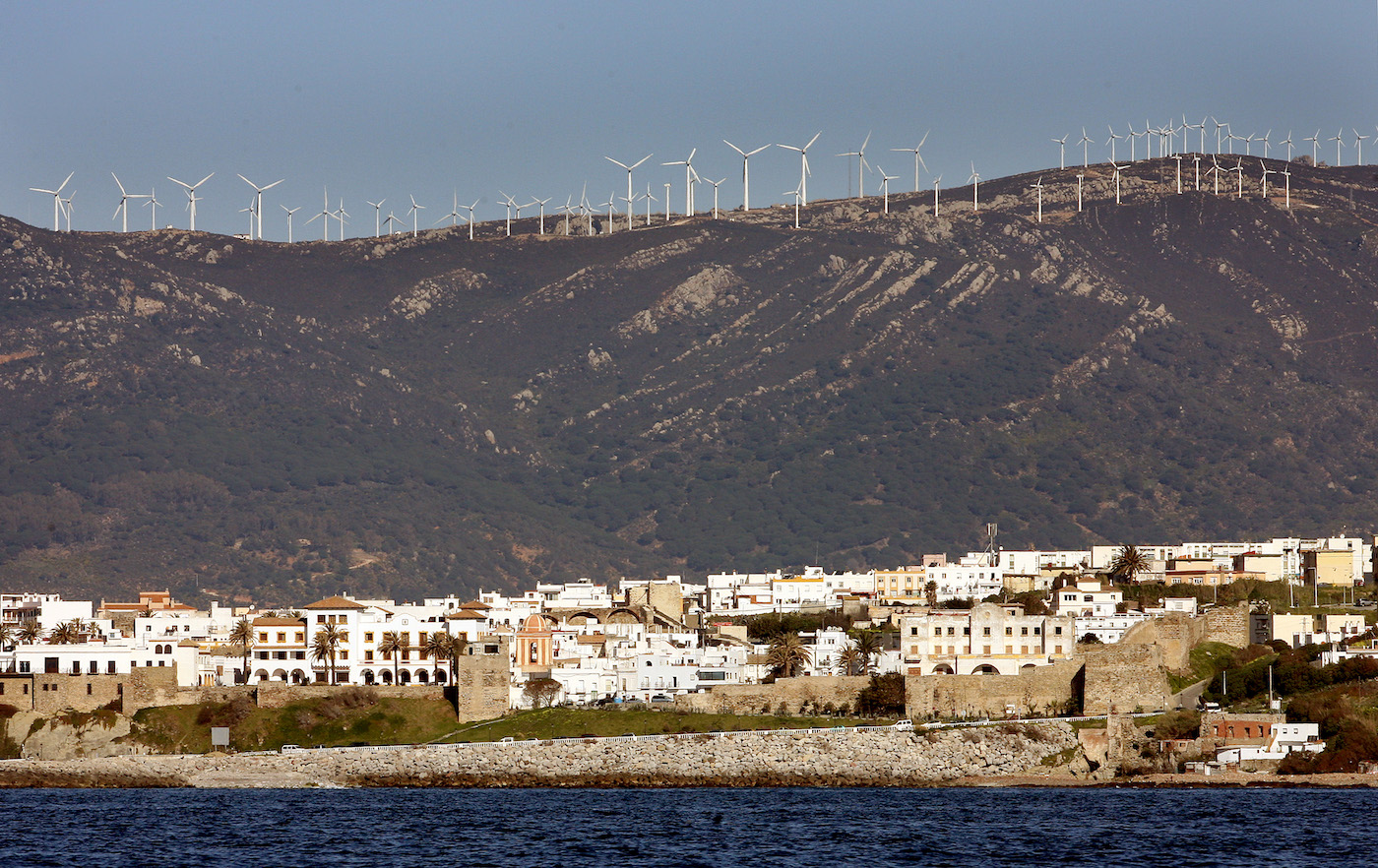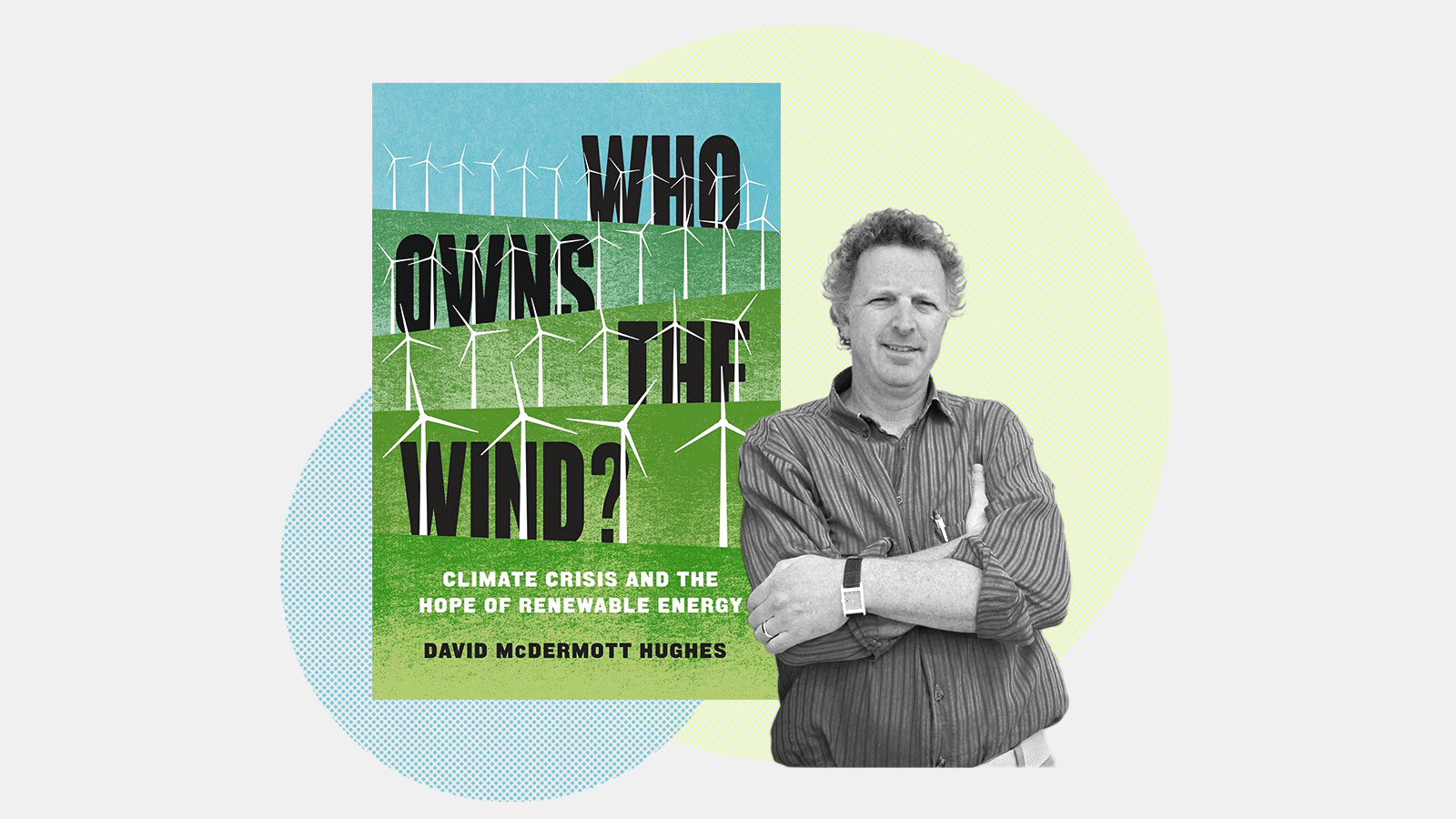In most of the world, wind and solar power are now the cheapest new sources of electricity. But despite this remarkable fact, major obstacles to greening up our energy systems remain. Even as polls consistently find high public support for renewable energy, many people still balk at the idea of constructing these projects in their neighborhoods.
Wind and solar farms take up much more space than the fossil-fueled power plants they will replace. While a natural gas-fired power plant might take up one city block, for example, generating the same amount of power with wind turbines could span 13 square miles. Not everyone is ready to welcome this intrusion on the landscape. Around the U.S., in upstate New York and rural Michigan, communities are rising up to oppose the construction of renewable energy on their fields and hills, threatening to derail climate action.
To better understand this resistance, David Hughes, an anthropologist at Rutgers University and a staunch wind advocate, looked to Spain. Wind development got a head start in the country in the late 1990s due to favorable policy and a burgeoning wind turbine manufacturing industry. Today, wind generates 20 percent of Spain’s electricity, compared with 8 percent in the U.S. But to Hughes, Spain’s experience is a cautionary tale. After a series of uprisings against the rapid construction of wind farms in the early 2000s, development largely plateaued.
In his new book, Who Owns the Wind?, Hughes chronicles an attempt by a small agricultural village in Andalusia to fight the nearby construction of a giant wind farm in 2006. Wind opponents in the 200-person village, which Hughes refers to using the pseudonym “Sereno,” organized protests, released photos of turbines killing birds to the press, and blocked the only paved road to the construction site. But eventually, wealthy landowners in the area struck a deal with the wind developers to earn rent on turbines placed on their property. They shut down the anti-wind movement by threatening to fire workers who protested the wind farms. Sereno is now surrounded by more than 200 turbines.
Hughes writes that people in Sereno perceive the turbines as ugly, industrial objects and feel a sense of loss over the agricultural character of the area. But Hughes also connects their opposition to the community’s long history of marginalization: The village, couched between two large latifundias, or large estates, receives few services from and no representation in the city it pays taxes to. The latifundistas, wealthy landowners who “control nearly every square meter of agricultural land” surrounding the village, now earn rent and royalties from the wind farms, while the impoverished villagers living in the shadow of the turbines receive neither jobs nor compensation.
Hughes proposes a new framework to enable a rapid and socially just transition to renewable energy. He suggests that governments “sever” wind rights from the land and socialize or nationalize the wind itself so that everyone is entitled to its benefits.
“Once your government or your community owns the kinesis of the wind, different politics ensue,” Hughes writes. “The landowner still collects rent for square meters devoted to turbine pads, but the value of airborne energy falls into public hands.”
Grist spoke with Hughes about what he learned in Sereno and how the U.S. might chart a different path. This interview has been condensed and edited for clarity.
Q. How did you come to write about Sereno and its relationship with wind energy?
A. I had been past this village on a holiday and seen this total forest of turbines that absolutely blew my mind. And so I thought, this is the most turbine-surrounded community in the world. And I thought, these are people living in the energy transition. Let’s see how they feel about it.
That perspective was missing in the debates about fossil fuels and renewables. Most of that debate has been led by natural scientists and engineers and technologists with very little attention to how one actually lives amid this technology, and what the effects are in one’s daily life.

Q. One of the key ideas in the book is that moving toward a renewable energy system and moving toward a more socially just world do not fit neatly together — one does not beget the other. Why is that?
A. My belief when I started this book was, “Well, we lost our chance in the ’70s to pursue this energy transition in a nice, consensual, touchy-feely, consultative way.” So now, we’re going to have to do it in a top-down, engineering-driven way.
But I realized — that doesn’t work in countries that are even minimally democratic. Because you have people like those in Sereno who are going to object forcefully enough to slow things down. Therefore, you need an energy transition that takes their interests and their voices into account if it’s going to succeed. The engineering part is actually very easy. But getting permission, getting a social licence to operate from local communities, is incredibly hard. And that’s the part that we need to be working on hardest, I think, and devoting the most attention to.
Q. The solution you propose is a legal framework where wind is treated as a commons and communities are entitled to royalties from this collectively owned resource. Can you explain how wind rights are usually determined today?
A. We mostly don’t think of wind as a resource at all, because it’s not tangible, it’s invisible. We haven’t really thought of it as a bucket of energy in the way we do with oil, or even hydropower. And so I wanted to draw attention to this question of: How do we appropriate the wind from nature as an owned resource?
It’s happening by default under this very strange legal precedent I write about in the book, going back to the 13th century, called the ad coelum rule, which says the landowner owns up to the sky. It allows society to replicate centuries-old forms of inequality through the energy transition. When you look at land ownership in the U.S., five families, who are all white, own as much agricultural land as the entire African American population. Which means that they own as much wind as the whole African American population. So it’s very important to establish different legal precedents at this point.
Q. One issue the book raises is that the wind farms in Spain did not create many jobs, and are operated mostly remotely from a control room in Mexico. Right now in the U.S., the politics of climate change is all about advertising how many jobs the energy transition is going to create. Do you think that’s misleading?
A. I think it’s being a little oversold, frankly. What Biden and most people are talking about is the construction phase. If we do it slowly, then it will create jobs for a generation or two. But if we do it slowly, we will fail to stabilize the climate before runaway effects overtake us, so I’m assuming we’ll do it quickly. But eventually it gets built. And turbines don’t require very much maintenance.
That’s why we have to start thinking about universal basic income. We obviously have to think about a transition; the energy transition has to be extremely sensitive to the needs of displaced workers. But simply saying that they’ll get jobs in the wind industry, I think is being unrealistic and is overselling it.
Q. Over the course of your research, people in Sereno grew to have slightly more affinity for the wind farm. They started putting up pictures of the wind farm in their restaurants and arranged guided scenic hikes among the turbines. Did that give you hope?
A. It did give me hope, but that didn’t actually put more turbines in the ground. They were not excited about them enough to go to surrounding villages and say, “Hey, we were wrong, these turbines are OK, you should get some for yourself.” For a quick energy transition, it’s not enough for rural people to just suck it up. The structure has to actually inspire them and encourage them and add to their enthusiasm. Empowering them over the resource is the fairest way, and I think the most logical way, to build that political support.
Q. Toward the end of the book, you describe how several of the villagers had been involved in helping migrants from Africa. You raise the idea that if they could somehow connect in their minds that wind turbines were another way to help African climate migrants, they might be more supportive. What are you envisioning?
A. I was blown away when I realized there had been, quite recently, this whole network of clandestine support for African migrants who crossed over the Strait of Gibraltar, and then were provided with food and water and clothes and so on, and ferried to the north to agricultural jobs. That suggests that people in Sereno are actually very cosmopolitan, and even willing to take risks for strangers who are Black and look very different from Sereneños, and poor. And so I thought, if these people could be empowered to do even more for poor people of the Global South suffering from climate change, they would.
This is why envisioning the energy transition as an engineering problem overlooks so many opportunities. When we use the word “solidarity” in the U.S., it’s an idea from the labor movement. It involves explicit struggles for social justice and so on. In Sereno, I found it was about personal relations wherein a stranger helps another stranger simply because one needs help, and one appeals for help. That’s something you can build on. And we haven’t made an effort — even the Green New Deal, I don’t think it makes an effort to build on that.




